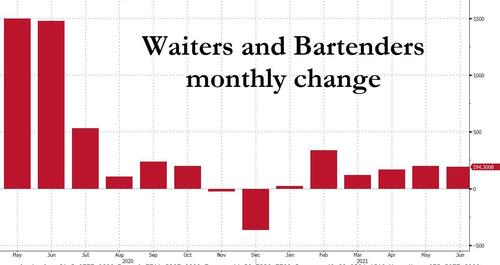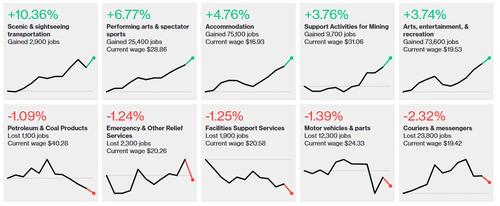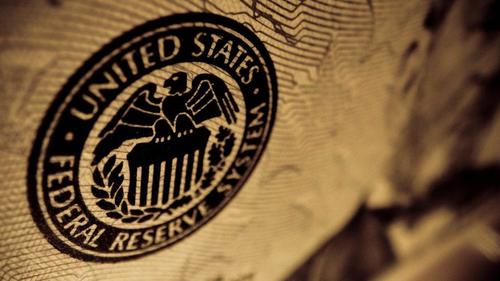
Murderous alien monsters might be taking over the world and literally eating all but a few hundred thousand sad souls, but the real threat, it turns out, is global warming. That’s the gist of The Tomorrow War, a ho-hum, straight-to-streaming summer blockbuster that wants to be the next Terminator 2, but gets bogged down by metaphor service and a by-the-numbers screenplay that can’t deliver on its central promise.
Like Terminator 2, The Tomorrow War is a time-travel story about a hero sent from one year to another in order to stop a global threat. The twist this time around is that The Tomorrow War is about a hero sent forward in time from the present, rather than backward from a post-apocalyptic landscape.
Three decades from now, it turns out, humans are fighting a losing war against a horde of alien monsters known as White Spikes, named for the bone-like projectiles they shoot from their limbs. The Spikes don’t appear to be particularly intelligent: They don’t use tools, and until late in the film, it’s not even clear how they arrived on the planet. But they are winning the battle against humanity, and projections show that the species has precious little time to live. So in order to recruit more fighters to keep the war effort going, the humans of the future look to the past, drafting mostly inexperienced present-day folks to fight and die against the spikes.
It’s Terminator 2 in reverse, with a little bit of Independence Day‘s wisecracking ordinary-heroes shtick thrown in for good measure: Our protagonist this time is Dan Forester, played by Chris Pratt—the Goofy Chris—and he’s both an ex-soldier turned high school science teacher, and the quintessential Good Dad. You can tell he’s a good dad because he does cute science stuff with his daughter and wears a soft-looking shawl-collar sweater in a comfortably appointed middle-class home. Look! All the clothing catalog–ready signifiers of middle-class decency, conveniently shoveled into the first 15 minutes of the script. (There’s also a grumpy, government-skeptical father figure played by J.K. Simmons, who, as is often the case, is the best thing about the movie. Sadly, he’s also barely in it.)
Fine, sure, let’s get on with it: The family connection stuff is generically heartwarming, but no better; the tug of lineage feels entirely pro forma, a vehicle for some perfunctory emotional connection to the futuristic action scenes that inevitably proceed. This is the bit that’s supposed to ground viewers in something relatable before all the hectic alien combat that happens later on, but it’s handled in a rote and clunky manner that, if anything, made me care less.
Inevitably, Forester meets his now-adult daughter in the alien-wrecked future to which he travels. She’s grown up to be a researcher working on a weapon that might help humanity win the war—and as it turns out, Papa Forester needs to deliver it back to the past. So the daddy-daughter duo fight aliens, bond while doing some Plot-Relevant Science Stuff in an ocean-bound lab, and eventually formulate a vial-shaped MacGuffin that Forester has to take home to the past.
It’s at this point that you slowly begin to realize the harsh and terrible truth about what’s truly going on: This movie, which has already run for an hour and 40 minutes, still has about 40 minutes to go.
The action scenes are loud and frantic but not much else. There’s a rudimentary progression to the set pieces—this time there are even more monsters!—but little in the way of real suspense. And while there are some potentially thorny moral and logical questions here about balancing the demands of probable future humans with those very much presently alive, the production mostly comes across as a series of clumsy box-checking exercises designed to advance to the big reveal at the end…which is less of a shocking story development and more of a hit-you-on-the-head metaphor about global warming.
There’s no way to discuss that metaphor without venturing into spoiler territory, so twist-a-phobes, consider yourselves warned.
You see, the aliens aren’t intelligent because they didn’t fly themselves to the Earth. Instead, they were (probably) planet-clearing bioweapons being transported as cargo on a ship that crashed in the Russian tundra hundreds of years ago. They were trapped in the ice—that is, until climate change thawed a glacier and set them free. Forester (did you catch the name? Forest…get it?), of course, discovers this with the help of a volcano-obsessed kid in his science class, because, you know, kids! Science! It’s all so obvious if you’re paying attention.
You see, in the end, it’s all about saving the children, and the way to save the children is for today’s adults to act now, before it’s too late, because our future is so precious and blah blah blah. The deadly monsters were unleashed by our inattention to the science, and if only we’d…yawwwwwwwwn. Al Gore’s filmed PowerPoint lecture held my attention better than this. And if nothing else, An Inconvenient Truth was only 96 minutes long.
I have no problem with political messages and metaphors in movies, even when I disagree with those messages. And for what it’s worth, I very much agree with my colleague Ron Bailey that climate change is real and could pose significant challenges for human society.
But to be effective as a sociopolitical metaphor, a movie like The Tomorrow War also needs to be modestly entertaining. It needs to find a novel way to make its boogeyman seem more real, more worrisome, more threatening. It needs to make you care. (One of the many reasons Terminator 2 is a classic is that it excelled at this.)
Instead, The Tomorrow War‘s stolidly by-the-numbers narrative and punishingly generic cast of characters have the opposite effect: It left me uninterested and increasingly bored. By the time the overlong third act rolled around, I just wanted the movie to be over. There’s probably a lesson there for both Hollywood blockbusters and climate change activists, but I can’t imagine anyone will learn it.
from Latest – Reason.com https://ift.tt/2Ts2YTC
via IFTTT








